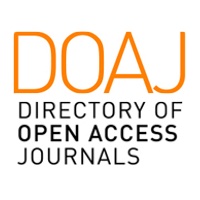ADAPTIVE VARIABILITY OF TOMATO HYBRIDS IN THE RIGHT BANK FOREST STEPPE OF UKRAINE
DOI:
https://doi.org/10.32782/2310-0478-2024-2-26-33Keywords:
stability, plasticity, ecological variation, genetic variation, productivity, fruit weightAbstract
The purpose was to investigate the manifestation of adaptive variability of tomato hybrids in the conditions of the Forest Steppe of Ukraine. During 2013–2023, six previously common and now promising tomato hybrids were studied in the field (Uman, 48°46′N, 30°14′E) in the forest-steppe zone Knyazhych F1 (st)*, Silhouette F1, Emrero F1, Bostina F1, Merlis F1, Brightina F1. The analysis of the obtained data was carried out by generally accepted methods of field and statistical research. During the research, the number of flowers, the degree of their setting and, accordingly, the number of fruits per plant, the average weight of marketable fruit, the dynamics of crop formation over the decade and the parameters of adaptability according to the above-mentioned characteristics were studied. As a result of the obtained data, promising hybrids were determined, with the aim of obtaining a high yield for fresh consumption and cheap raw materials for the processing industry in the Forest Steppe of Ukraine. It was found that the Silhouette F1, Bostina F1 and Brightina F1 hybrids are best suited to this climatic zone with an average yield of 49.7, 48.9 and 49.8 t/ha, respectively, and a large fruit weight of 97–114 g. As a result of research of carpogenesis processes, it was found that the smaller the number of flowers formed, the greater the degree of their binding and the average weight of the fruit. The highest percentage of fruit set was noted in the Bostina F1 hybrid – 89%, in others – 72–82%. The study of the degree of variation of traits showed an average variation in the number of flowers, CV = 14% and a weak number of fruits, CV = 8%. The conducted studies proved that tomato fruits with the largest mass (from 107 to 128 g) were formed in 2013, 2014, 2021 and 2023 – optimal precipitation, and fruits with the minimum mass – in 2015, 2016, 2019 and 2022 – 74–82 g. The hybrids Silhouette F1, Bostina F1, and Brightina F1 had a significantly larger fruit weight on average, and two hybrids that produced consistently large fruits – Silhouette F1 and Bostina F1 – were noted. On average, over the period of research, all experimental variants reliably outperformed the standard. Genetic-statistical analysis of the trait "yield" showed that hybrids Silhouette F1, Emrero F1, Bostina F1, and Brightina F1 were stable, and hybrids Silhouette F1, Bostina F1, Merlis F1, Brightina F1 were adaptive. A low ratio of genetic and environmental variation of traits CVG/CVA = 0.36–0.37 was revealed, which indicates that the biological potential of tomato hybrids is not fully realized.
References
FAO. The future of food and agriculture – Alternative pathways to 2050. Rome. 2018. 224 pp. https://openknowledge.fao.org/server/api/core/bitstreams/e51e0cf0-4ece-428c-8227-ff6c51b06b16/content.
The IPCC finalized the Synthesis Report for the Sixth Assessment Report during the Panel's 58th Session held in Interlaken, Switzerland from 13–19 March 2023. Available online: https://www.ipcc.ch/report/sixth-assessment-report-cycle/
Zhao C., Liu, B., Piao, S.L. et al. Temperature increase reduces global yields of major crops in four independent estimates. Proc. Natl. Acad. Sci. USA, 2017, 114, 9326–9331.
Elazazi E, Ziems L, Mahmood T, et al. Genotypic Selection Using Quantitative Trait Loci for Better Productivity under High Temperature Stress in Tomato (Solanum lycopersicum L.). Hortic ulturae, 2024, 10(8), 874. https://doi.org/10.3390/horticulturae10080874.
Alsamir M., Ahmand, N., Ariel V., Mahmood T. Trethiwan R. Phenotypic diversity and markertrait association under heat stress in tomato (Solanum lycopersicum L.). Aust. J. Crop Sci., 2019, 13, 578–587.
Lohani N., Singh M.B., Bhalla P.L. High temperature susceptibility of sexual reproduction in crop plants. J. Exp. Bot.. 2020, 71, 555–568.
Janni M., Maestri E., Gulli M., Marmiroli M., Marmiroli N. Plant responses to climate change, how global warming may impact on food security: A critical review. Front. Plant Sci., 2024, 14, 1297569.
Vasani M. J., Lunagaria M. M. Influence of Growing Environments on Growth, Phenology and Fruit Yield of Tomato in Semi-Arid Climate of Anand District of Middle Gujarat Region, India. International Journal of Environment and Climate Change, 2024.14 (8):627–34. https://doi.org/10.9734/ijecc/2024/v14i84382.
Avdikos I.D., Tagiakas R., Tsouvaltzis P., et al. Comparative Evaluation of Tomato Hybrids and Inbred Lines for Fruit Quality Traits. Agronomy, 2021, 11, 609. https://doi.org/10.3390/agronomy11030609.
Martirosyan H. H., Vardanian I. V., Sargsya G. Zh. IOP Conf. Ser.: Earth Environ. Sci., 2023, 1229, 012026. DOI:10.1088/1755-1315/1229/1/012026
Улянич О.І., Воробйова Н.В., Ковтунюк З.І., Яценко В.В. Виробничо-біологічна оцінка та ефективність вирощування гібридів помідора. Вісник Уманського НУС, 2021, 2, 111–125.
Bhandari R., Neupane N., Adhikari D. Climatic change and its impact on tomato production in plain area of Nepal. Environmental Challenges, 2021, 4. 100129. 10.1016/j.envc.2021.100129.
WORLD POPULATION REVIEW. Retrieved from: https://worldpopulationreview.com/countryrankings/tomato-production-by-country
Воробйова Н.В. Адаптивність до умов Лісостепу України та врожайність сортів помідора. Овочівництво і баштанництво: міжвідомчий тематичний науковий збірник, 2021, 69, 79–88.
Бондаренко Г. Л., Яковенко К. І. Методика дослідної справи в овочівництві і баштанництві. Харків: Основа, 2001. 369 с.
Finlay K.W., Wilkinson G.N. The analysis of adaptation in a plant breeding program. Aust. Journ. Agric. Res., 1963, 14, 742–754.
Eberhart S. A., Russell W. A. Stability parameters for comparing varieties. Crop. Sci., 1966, 6(1), 36–40.
Rossielle A. A., Hemblin J. Theoretical aspects of selection for yield in stress and non– stress environvents. Crop. Sci., 1981, 21(6), 27–29.
Shing M., Ceccarelli S., J. Hambling. Estimation of heretability from varietal trials data. Theorical and Applied Genetics, 1993, 86, 437–441.
Burton G.W., R.W. De Vane. Estimating heritability in tall Fescue (Festuca arundinacea) from replicated clonal material. Agronomy Journal, 1953, 45, 478–481.








